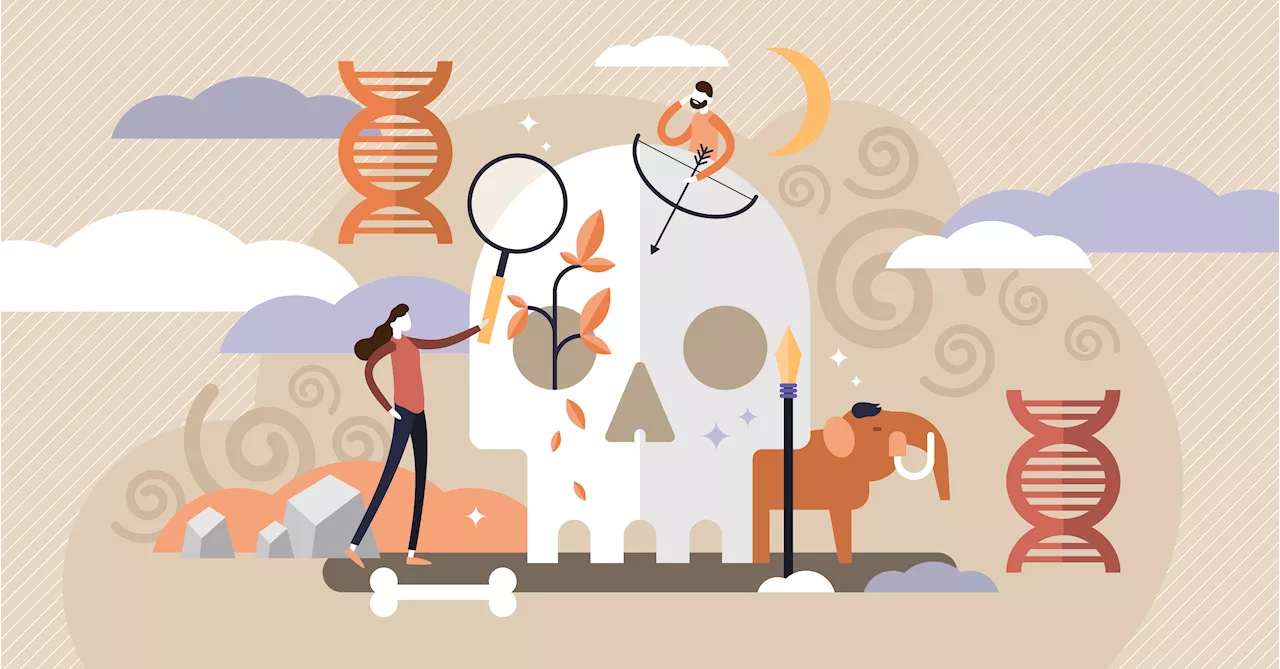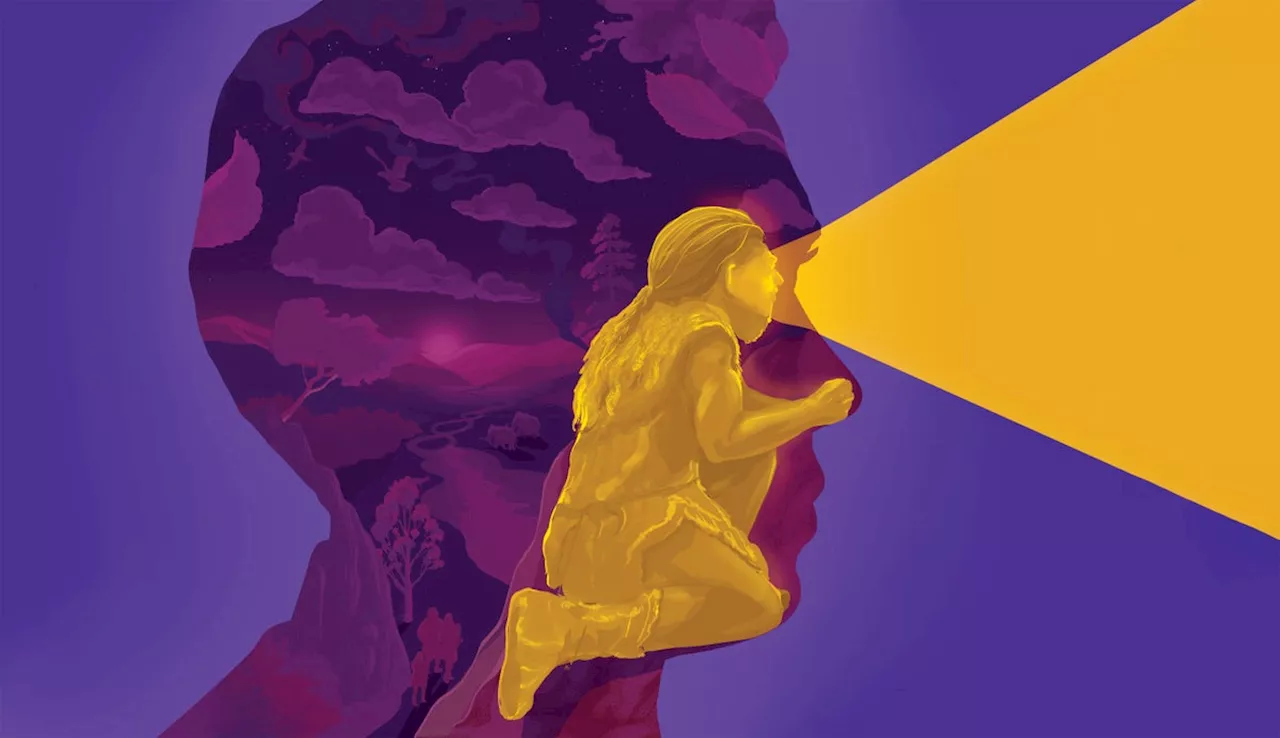This article delves into the fascinating world of Neanderthal DNA and its enduring impact on modern humans. From immune system function to brain development, exploring how interbreeding with our extinct cousins continues to shape our biology and cognition.
The divide between our lineage and that of the Neanderthals narrowed considerably in 2010 with the publication of the first Neanderthal genome sequence. Comparing this ancient DNA with modern human DNA revealed that the two species had interbred, and that people today still carry the genetic fingerprint of this intermixing.
Since then, numerous studies have explored the ways in which Neanderthal DNA affects our modern physiology, revolutionizing our understanding not only of our extinct cousins but of ourselves as a hybrid species. This field of research, clinical paleogenomics, is still in its infancy, and there are many complexities to unravel as we explore this new frontier. We must therefore approach the findings from these studies with a degree of caution. Nevertheless, research conducted to date raises the fascinating possibility that Neanderthal DNA has wide-reaching effects on our species—not only on general health but also on brain development, including our propensity for conditions such as autism. In other words, DNA from our extinct relatives may, to some extent, shape the cognition of people today. It seems that every few weeks a new study expands our understanding of how Neanderthal DNA affects modern human health and physiology. Researchers have found that some Neanderthal DNA makes carriers more vulnerable to various immune disorders, such as systemic lupus erythematosus and Crohn’s disease, and some gene variants affect an immune molecule known as interleukin-18, which plays a role in predisposition to autoimmune disorders. Some Neanderthal DNA variants are implicated in an increased risk for severe COVID, whereas others appear to be protective factors. Still other Neanderthal-derived variants may be instrumental in determining whether we develop allergies. And there is some evidence to suggest that our ancient cousins’ DNA may even be implicated in asthma—a subject of ongoing research. Scientists have also documented a number of effects of Neanderthal DNA beyond the immune system. Neanderthal DNA may affect the color of our skin and hair, how readily our blood clots, our propensity for heart disease, and how our cells respond to various environmental stressors such as radiation. It can also help determine how prone we are to certain skin cancers and thiamine (vitamin B1) deficiency. The notion that Neanderthal DNA might significantly influence our brains and behavior, however, is actually a bit counterintuitive. Previous research has shown that this ancient DNA tends to be underrepresented in the brain-related genes of modern humans, primarily because these types of genes are very sensitive to change, and anything new gets weeded out fairly quickly. These regions of the genome are known as Neanderthal DNA deserts. Yet studies published over the past decade have shown that some Neanderthal DNA has in fact persisted in and around some brain-related genes in modern humans. The effects of Neanderthal DNA are apparent throughout the brain and associated structures in people today. Philipp Gunz of the Max Planck Institute for Evolutionary Anthropology in Leipzig, Germany, and his colleagues found that people with higher percentages of Neanderthal DNA are more likely to have skull shapes that are modestly elongated and reminiscent of the Neanderthal skull, particularly around the parietal and occipital regions toward the back of the cranium. This skull elongation is sometimes associated with Neanderthal variants that are located near genes involved in neuron production and the formation of myelin, the fatty sheath that insulates the axons of larger neurons, allowing them to communicate more reliably over longer distances
NEANDERTHAL DNA HUMAN EVOLUTION GENETICS IMMUNE SYSTEM BRAIN DEVELOPMENT
United States Latest News, United States Headlines
Similar News:You can also read news stories similar to this one that we have collected from other news sources.
 Unveiling The Legacy in Silo 18The Silo 18 narrative delves into the mysteries of 'The Legacy,' a vast repository of human history and cultural artifacts. Bernard unveils this secret vault to Lukas Kyle, revealing a treasure trove of art, literature, music, and even a model of the solar system. The digital archives are linked to an advanced AI, but the discovery of Salvador Quinn's coded letter hints at a potential danger far greater than a simple silo rebellion.
Unveiling The Legacy in Silo 18The Silo 18 narrative delves into the mysteries of 'The Legacy,' a vast repository of human history and cultural artifacts. Bernard unveils this secret vault to Lukas Kyle, revealing a treasure trove of art, literature, music, and even a model of the solar system. The digital archives are linked to an advanced AI, but the discovery of Salvador Quinn's coded letter hints at a potential danger far greater than a simple silo rebellion.
Read more »
 Biden's Legacy: A Legacy of FailureThis article argues that Joe Biden's presidency has been a failure, citing his policies on DEI, ESG, immigration, and censorship as evidence. It also highlights the economic damage caused by his administration's spending habits.
Biden's Legacy: A Legacy of FailureThis article argues that Joe Biden's presidency has been a failure, citing his policies on DEI, ESG, immigration, and censorship as evidence. It also highlights the economic damage caused by his administration's spending habits.
Read more »
 Neanderthal Genes: A Legacy of Immunity and DiseaseThis article explores the genetic legacy of Neanderthals, highlighting how interbreeding with Homo sapiens shaped the human immune system and potentially contributed to the extinction of Neanderthals.
Neanderthal Genes: A Legacy of Immunity and DiseaseThis article explores the genetic legacy of Neanderthals, highlighting how interbreeding with Homo sapiens shaped the human immune system and potentially contributed to the extinction of Neanderthals.
Read more »
 Expedition Cruises: Unveiling the World's Hidden Gems in 2025 and BeyondThe allure of expedition cruises continues to soar, offering intrepid travelers the chance to explore remote destinations on intimate vessels accompanied by expert guides. This article highlights six captivating new itineraries for 2025 and beyond, showcasing destinations like Greenland's Scoresby Sund, Colombia's Magdalena River, and Kerala's enchanting backwaters.
Expedition Cruises: Unveiling the World's Hidden Gems in 2025 and BeyondThe allure of expedition cruises continues to soar, offering intrepid travelers the chance to explore remote destinations on intimate vessels accompanied by expert guides. This article highlights six captivating new itineraries for 2025 and beyond, showcasing destinations like Greenland's Scoresby Sund, Colombia's Magdalena River, and Kerala's enchanting backwaters.
Read more »
 Tiffany & Co. Celebrates FIFA Club World Cup Trophy UnveilingThe American jeweler and FIFA came together to debut the inaugural FIFA Club World Cup Trophy at the Tiffany Landmark.
Tiffany & Co. Celebrates FIFA Club World Cup Trophy UnveilingThe American jeweler and FIFA came together to debut the inaugural FIFA Club World Cup Trophy at the Tiffany Landmark.
Read more »
 Unveiling Tuscany's Hidden GemsExplore lesser-known treasures in Tuscany beyond the iconic cities. Discover medieval festivals, local markets, and culinary experiences.
Unveiling Tuscany's Hidden GemsExplore lesser-known treasures in Tuscany beyond the iconic cities. Discover medieval festivals, local markets, and culinary experiences.
Read more »
